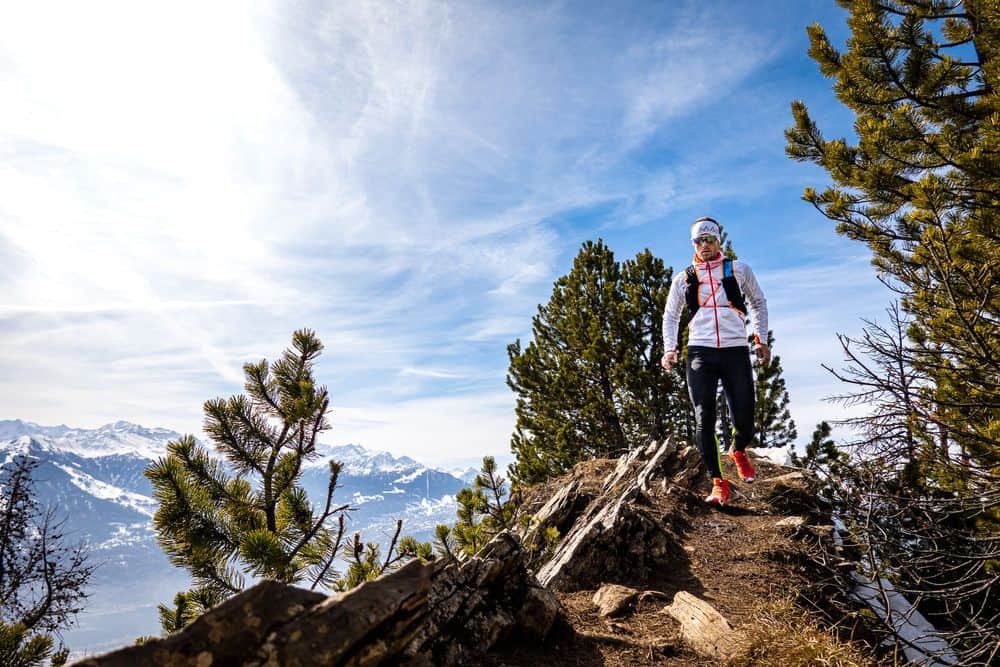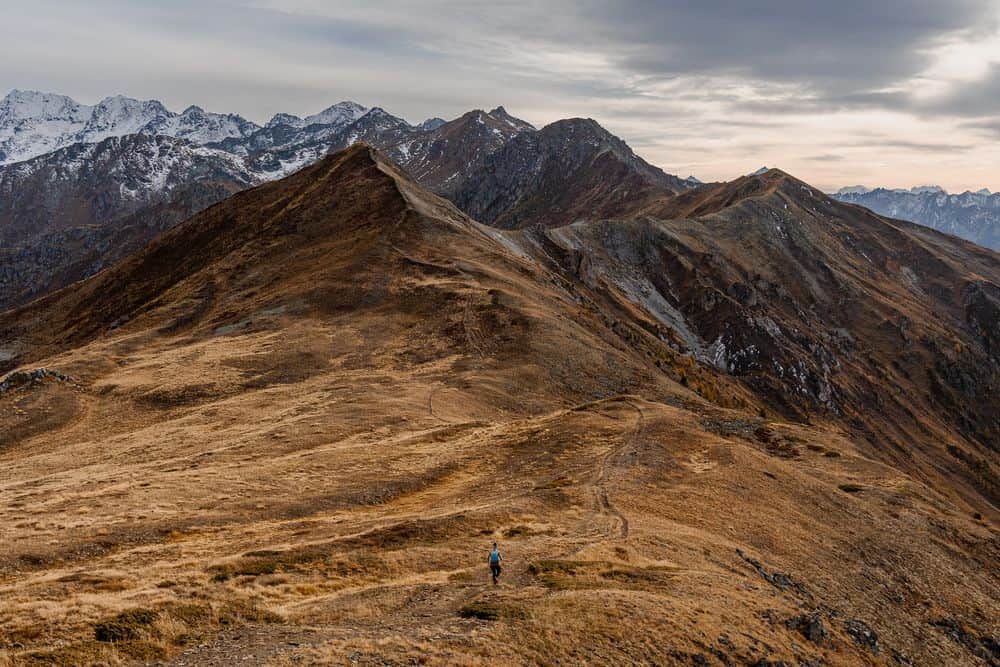If you have worked your way to the summit, you have also earned your way down. Especially on longer runs and climbs with several hundred or even thousand meters of altitude, it's easy to think that it's "only" downhill now. However, we often forget that the way down is also strenuous and that our legs are no longer the freshest. This increases both the risk of injury and the risk of falling - both scenarios that we want to avoid at all costs on a trail run.
Running downhill is exhausting
Even if the perceived exertion and the energy expended is undoubtedly the highest when running uphill, running downhill is also associated with the highest levels of stress on our bodies. The strain on the bones, tendons and muscles reaches its highest peak here and that brings us straight to the point: the summit is only half the goal, just like in mountaineering. Only when we reach the valley can we put our feet up and give our body the rest it needs after a strenuous run.
Running techniques for downhill running
Just like running uphill or on flat terrain, there are also various techniques for running downhill to make this part as easy on the joints and muscles as possible. We pay particular attention to three areas: cadence, foot placement and upper body posture. All three movement sequences are important components in the overall picture of our running style and play a decisive role in whether our run remains an enjoyable experience or becomes an ordeal. In this article, we will focus in particular on the lower body. We will take a closer look at arm movement techniques and other important aspects of the upper body in a separate article.
A fast cadence for the benefit of our knees
If you remember the controversial era of Lance Armstrong's Tour de France victories, you may also remember his riding style on the road bike. Although Armstrong didn't invent spinning, his cadence was incredibly high, even within a peloton full of professionals. A high cadence is an important factor in cycling in order to expend fewer watts per crank revolution and thus remain efficient for longer.
In running, we can learn a lot from this technique, especially when running downhill. Here, too, we want to get downhill as economically as possible (as well as protecting our bones, cartilage and ligaments). If you look at the sequence of steps when running downhill, it quickly becomes clear that the jump-off phase in particular must be followed by a landing phase - and this is naturally relatively hard when running downhill (we are jumping down the mountain, so to speak). A hard landing in turn requires a large force to be exerted on our body and this force has three ways of being absorbed:
- Our bones and cartilage absorb a large part of the forces that occur.
- We absorb a large part of the forces via our muscles.
- We rely on extremely well-cushioned running shoes and their ability to absorb forces via the cushioning material.
The last point is - to put it kindly - window dressing. No shoe, no matter how much cushioning it has, can absorb the enormous forces that occur when running downhill. What's more, trail running shoes with a lot of cushioning often provide little feel for the ground, which is a hindrance, especially on technical trails.
This leaves us with our skeleton and muscles. It should be obvious that a constant peak load on our bones, cartilage, tendons and ligaments is not a particularly good way to prevent them from ageing. Many runners have problems with their knees sooner or later. Our aim should therefore be to minimize the direct impact of forces on these structures and instead absorb the majority of them via the leg muscles around the knee and at the ankle.
This is where the high cadence when running downhill comes into play. If we were to take long, long strides, our muscles would have to work a lot harder each time in order to absorb the step, or almost jump. If, on the other hand, we take smaller steps, the effort required is also significantly less. Big steps require maximum strength, small steps require endurance over comparatively more repetitions (a smaller step frequency also means that we have to take more steps). It is therefore convenient that we humans can score points primarily with endurance and less with maximum strength.
So if we take smaller steps, and depending on the steepness of the terrain this can go as far as tripping, we save energy on the one hand and significantly reduce the forces acting on our knees on the other.
How do we place our feet?
When running on the flat, we know the forefoot run, the midfoot run and the heel run. All three running techniques have their raison d'être and there is no right or wrong. Depending on the running situation, one or the other technique may make more sense and every runner would do well to know them and use them according to the situation. The same applies to the foot technique when running downhill:
Anyone who has ever tried to run downhill using the forefoot technique will probably not have made a particularly elegant impression in the long term. What works well uphill is only occasionally possible and useful downhill, as stability in particular is rather limited. In practice, we will therefore primarily put our heel and midfoot on first. The condition of the sole of our trail running shoes is therefore particularly important. Experience has shown that the rear outer edge of the sole of the shoe is the first to wear out - wear that we should keep an eye on: without a grippy sole, a descent in muddy terrain or on damp grass quickly becomes an uncontrollable slide and we run the risk of falling, especially in the mountains.
Finally, if we combine the placement of our feet with the midfoot or heel technique with a high cadence, we can also run long and steep downhill stretches with relatively little effort and still enjoy our trail run in a relaxed manner.
Falling back is never good
In addition to our feet, we should also pay attention to our upper body posture, especially on technical downhill terrain. As with skiing, leaning back too much when trail running is a kind of antipattern. In addition to the visual "elegance" that takes some getting used to, leaning back also poses a safety risk. Our center of gravity moves behind our feet, making the entire human system unstable on the mountain. This makes it easier to slip on debris and on slippery terrain such as mud, snow or wet grass, we put ourselves at risk of losing control.
What is the perfect technique for downhill running?
There is no such thing as the perfect technique. Everyone will have to find their own way and in practice you will often see a mixture of all possible (and impossible) movement sequences. It is important to know and understand the effects. This knowledge enables us to find the most economical running style possible and thus do something good for our body in the long term.
In our individual trail running coaching sessions, conducted by experienced, Swiss Athletics-certified trail running coaches, we take plenty of time to focus on your personal running technique and take you to the next running level.



